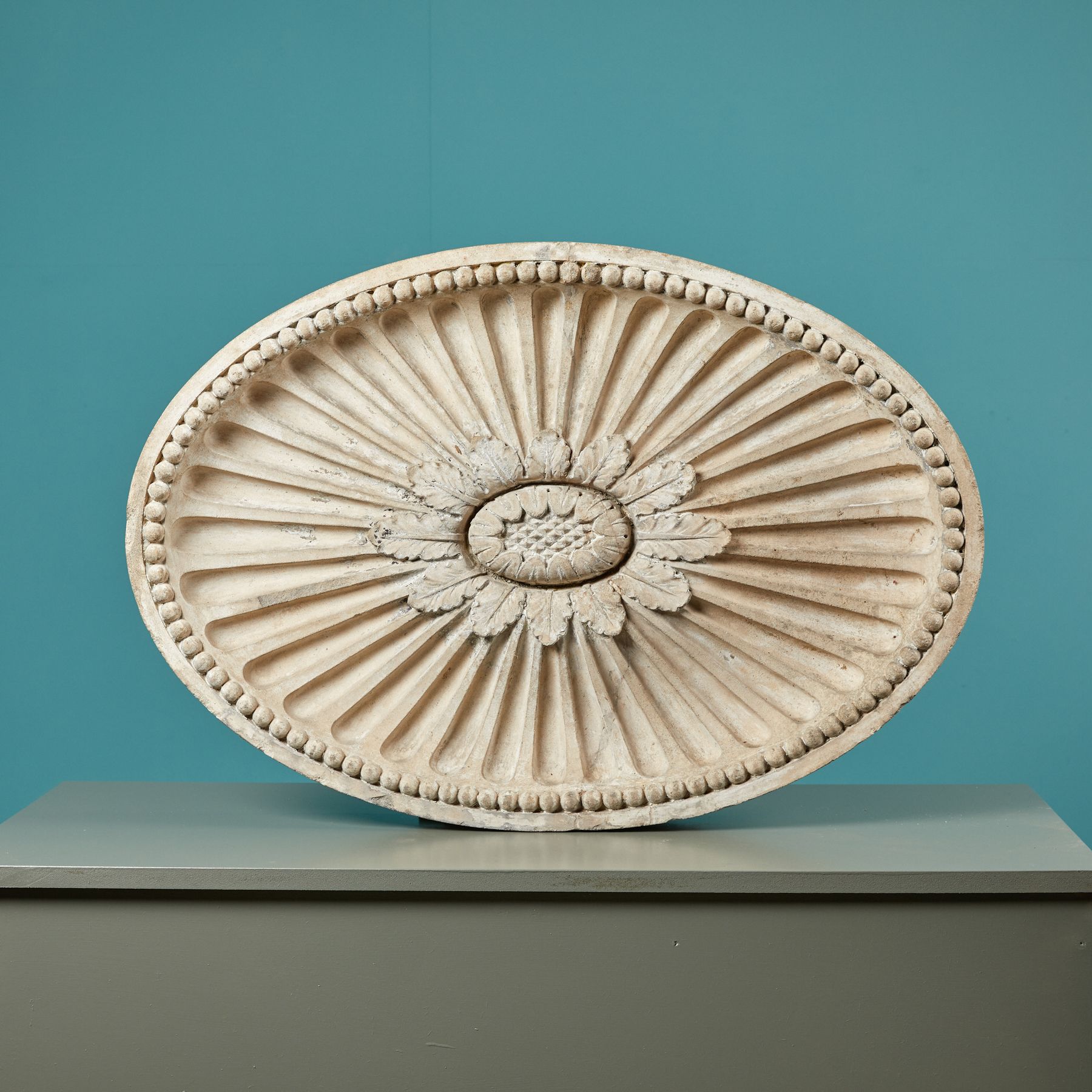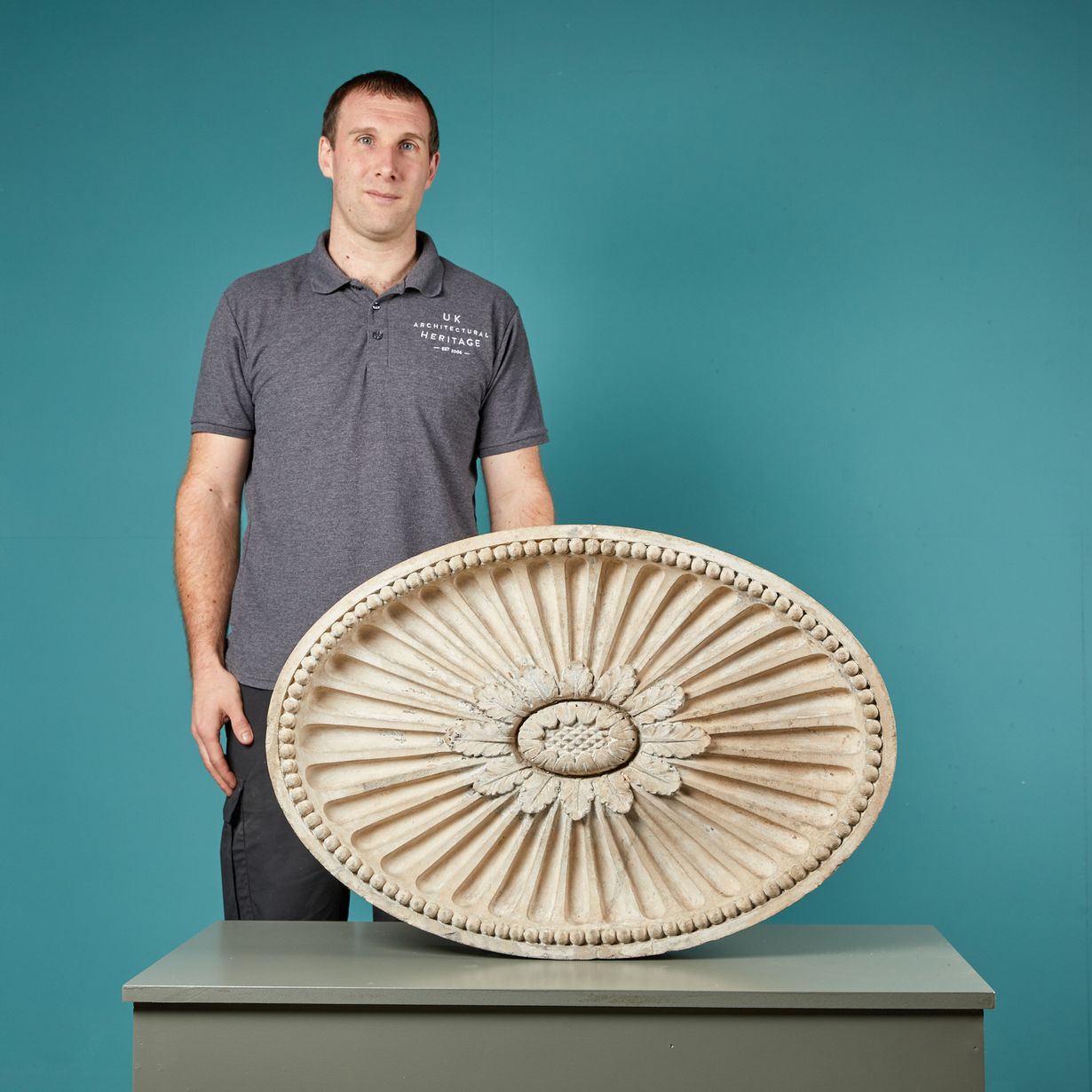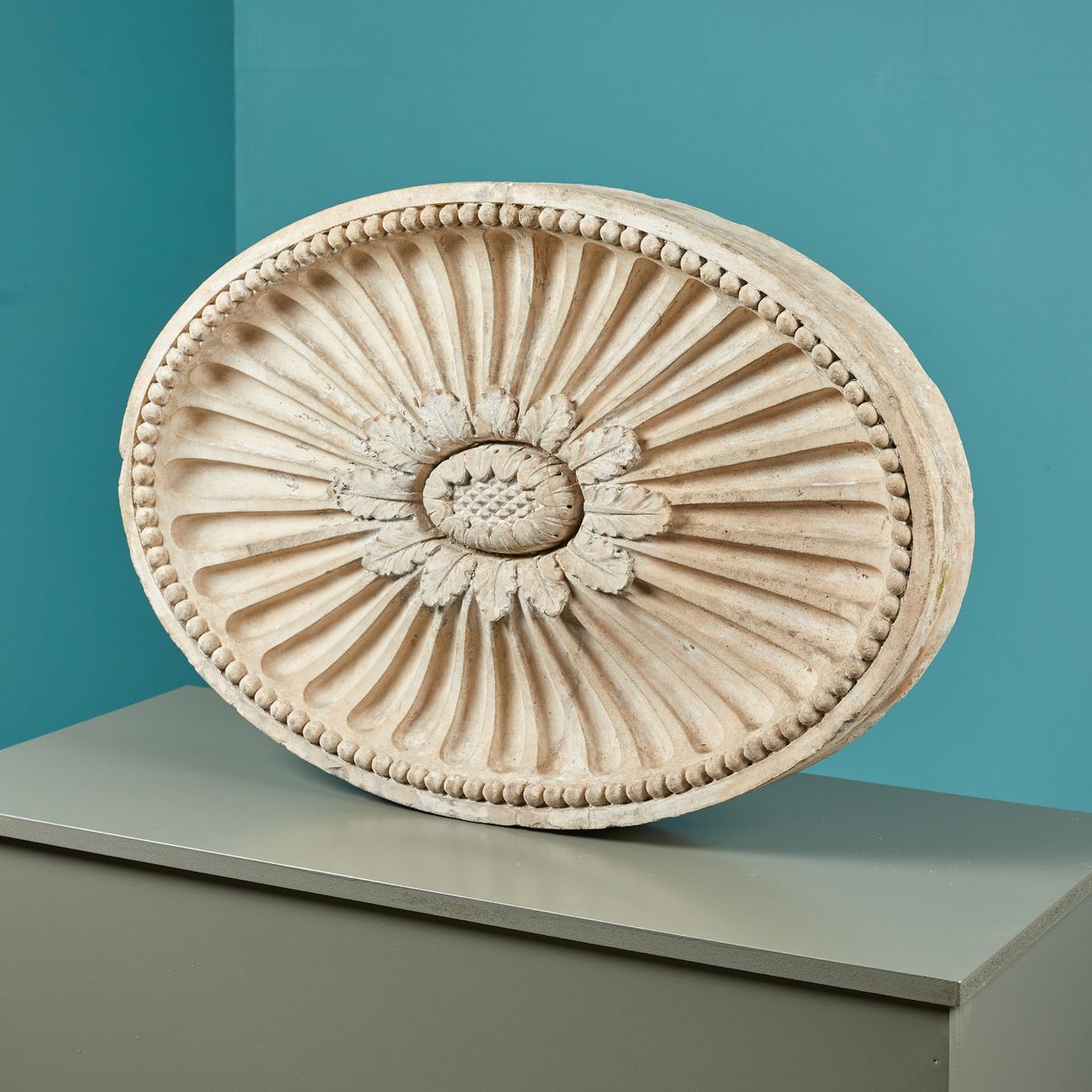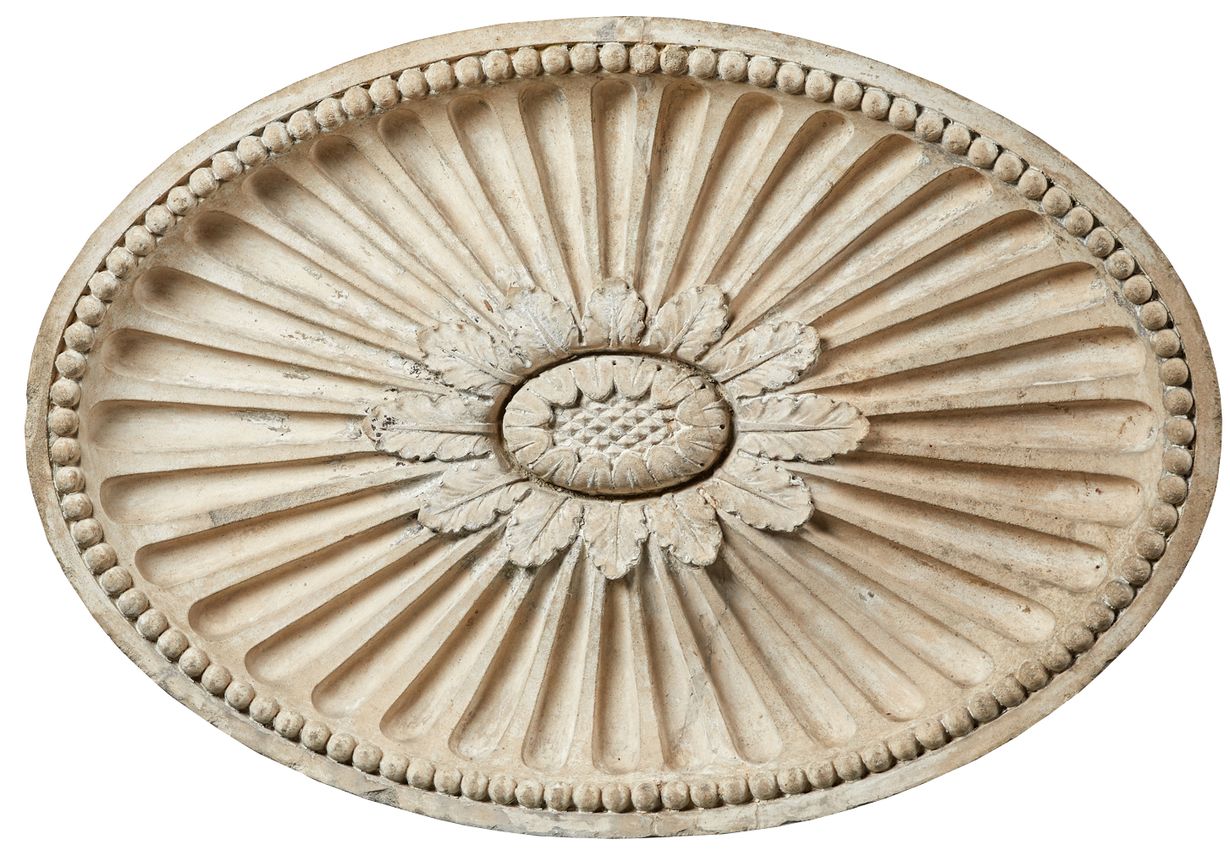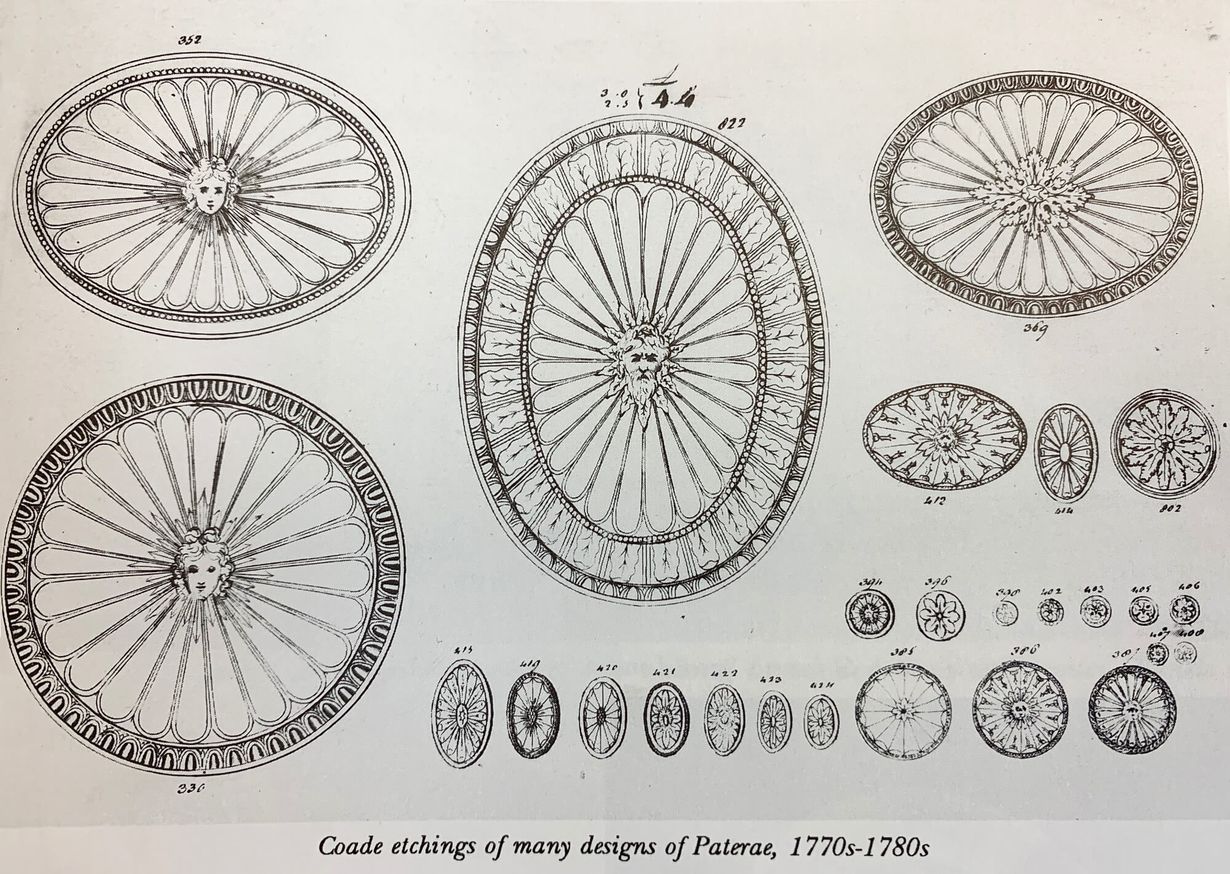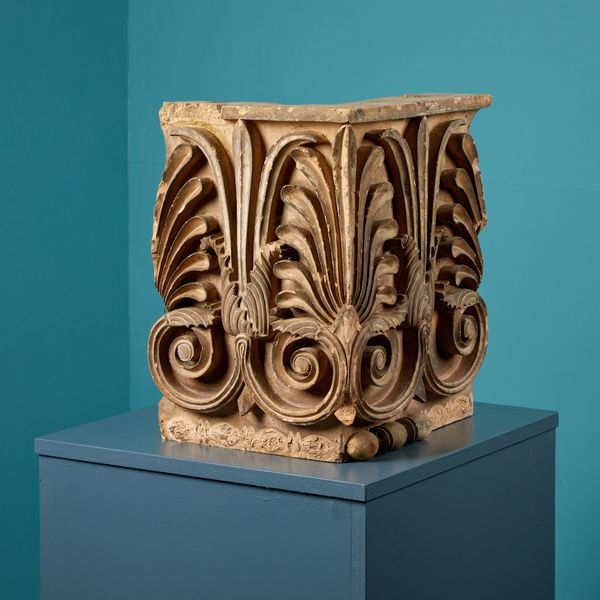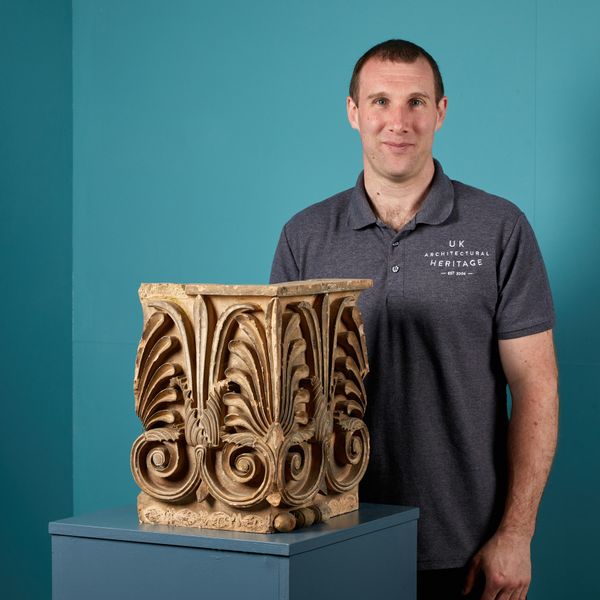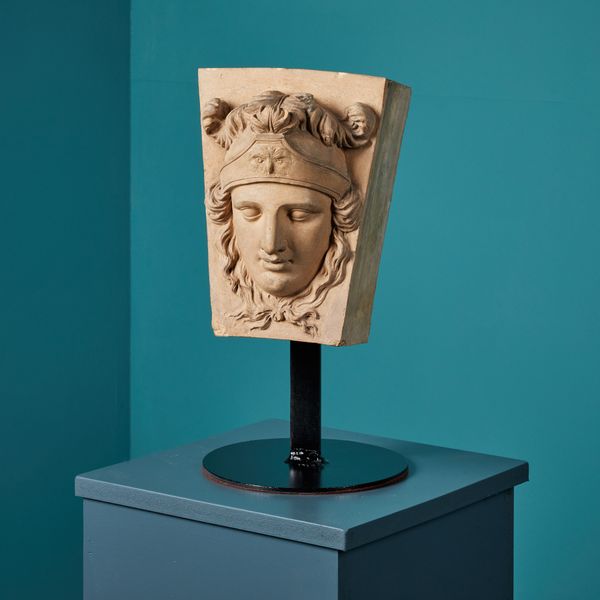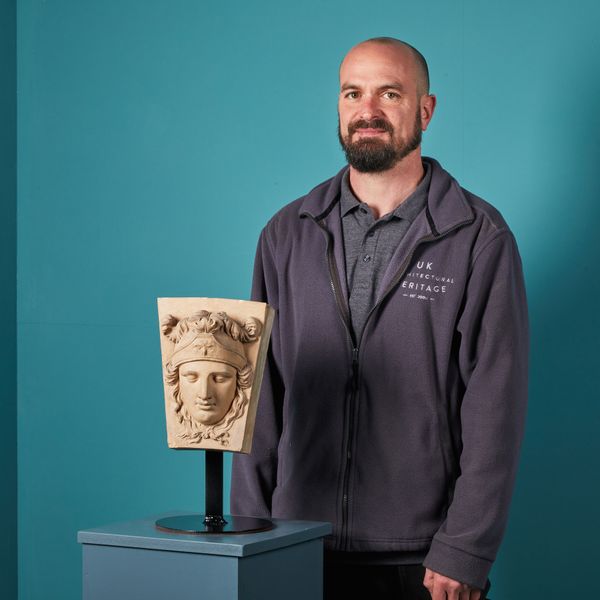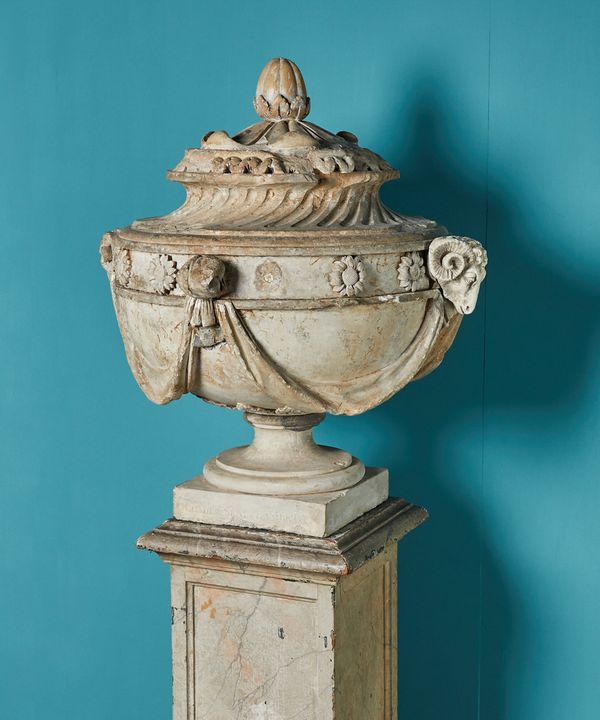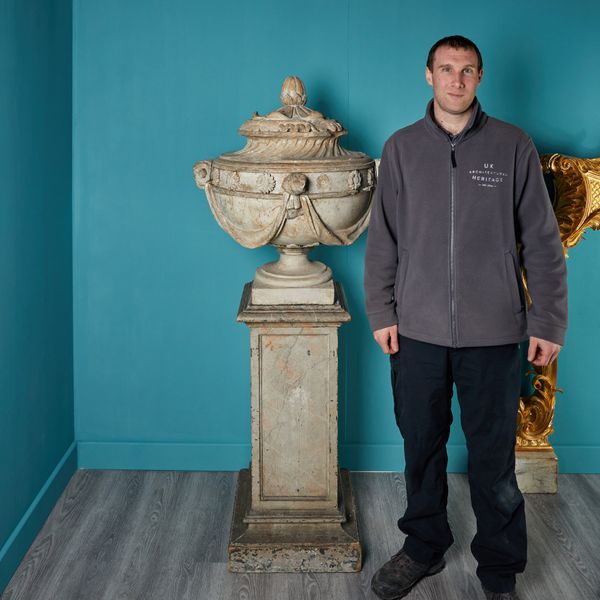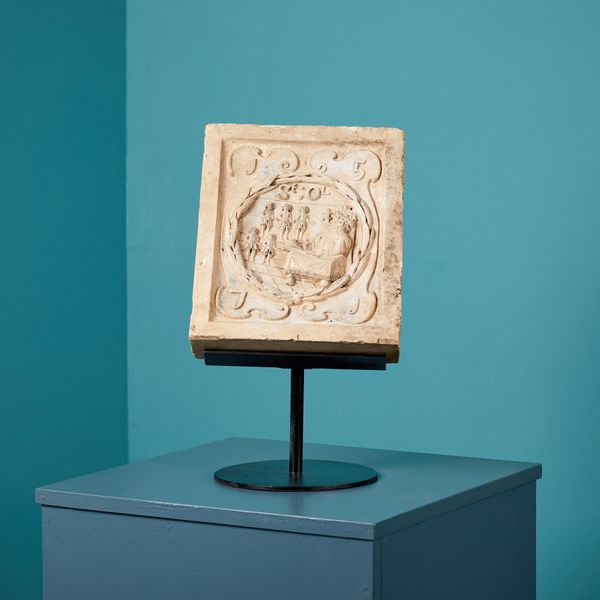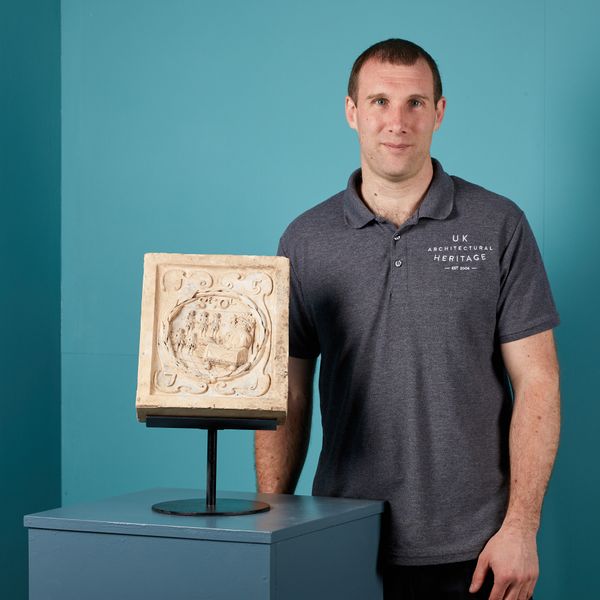About this piece
back to topIn classic architecture, a large patera (or paterae plural) like this would have once embellished a frieze or wall of a prominent building or house. This oval patera is a beautiful example of 18th century architecture, showcasing ornate details of the period. It is made in Coade stone, a famous and innovative material of its time, developed by industry pioneer Mrs Eleanor Coade. Find out more about this famed stone over on our blog.
Coade Stone
During the 1780s, classical architecture saw a burst in popularity and Coade stone was one of the industry frontrunners. The etchings pictured showcase the stones sheer popularity, the business offering a huge range of designs for customers to choose from. Smaller paterae were likely used for embellishments on chimneypieces and furniture, while large stone pateras like this one were reserved for architecture. Made during the late 18th century, this oval patera sees a central circle of beads with overlapping leaves and an outer border of fluting, suggesting the centre of a daisy. Coade stone is renowned for its hardiness and durability and as a result, this oval patera likely looks very similar if not the same as it did when Eleanor Coade first designed it more than 200 years ago. Today, it could be used as it was intended to embellish architecture or alternatively as an object of historical interest in an interior.
Image source: ‘Coade etchings of many designs of Paterae, 1770s-1780s’ from Mrs Coade’s Stone by Alison Kelly
